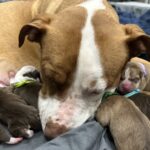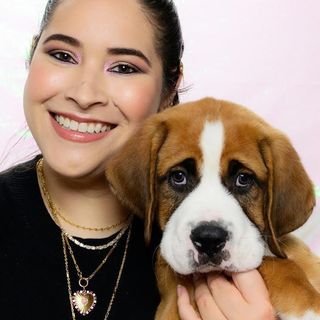There are two fear periods that puppies go through, one during the Socialization Stage and another during the Adolescent Stage. The onset of the fear period depends on the individual dog, and it can be influenced by breed.1
Studies have shown that German Shepherds can experience an onset of fear at five weeks old; Cavalier King Charles Spaniels at eight weeks old; and Yorkshire Terriers at six weeks old.1 It is hypothesized that the slow development of Cavaliers coincides with the later onset of fear.1
As a result, it is more important for us to be aware of signs of a puppy experiencing fear as the market of the start of a fear period rather than hold rigidly to a specific week.
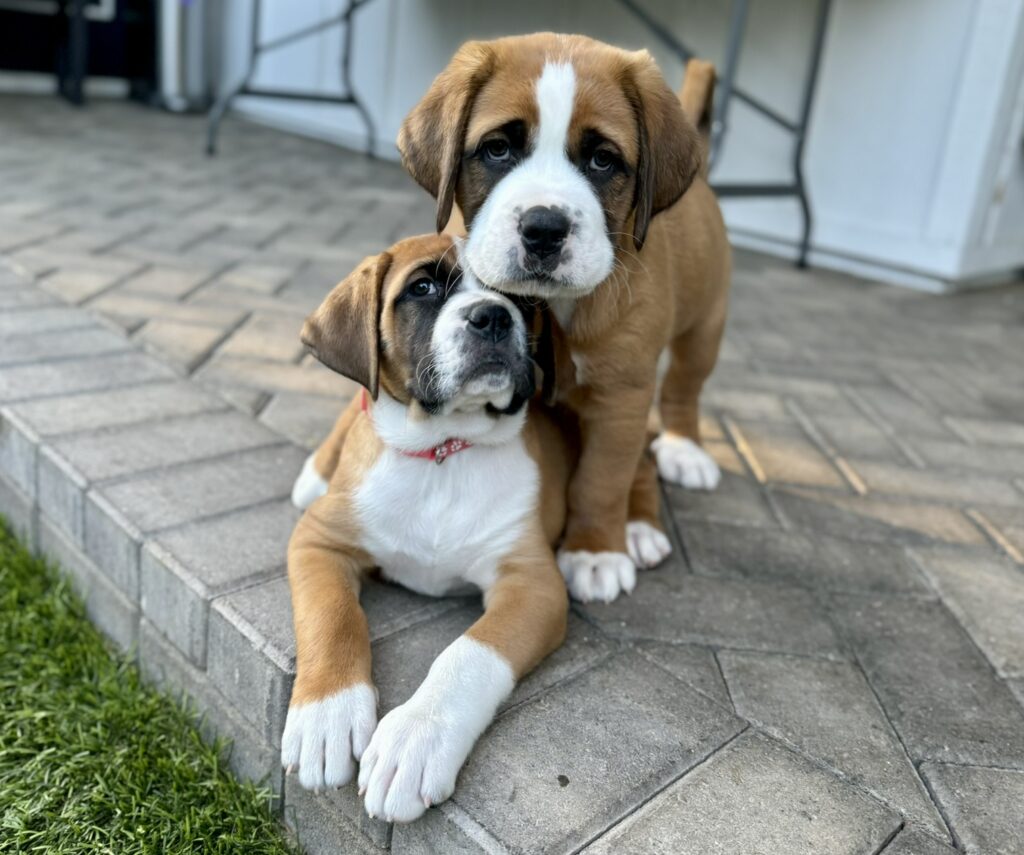
Signs of Fear
- Crouching
- Hiding
- Lip licking
- Panting
- Tucked tail
- Whining
- Widened eyes
- Yawning
The First Fear Period
A puppy’s fear response usually develops between five and eight weeks and can last two to three weeks from its onset.1 The start of the fear period has shown to be breed-dependent, which may also be related to the speed in which a breed is known to develop.
Rescues and owners are often dealing with mixed breed pups, and their breed makeup may be entirely unknown. As a result, it is key for human caretakers to look for signs of fearfulness and back away from novel experiences as appropriate depending on the pup’s level of fearfulness.
More mobile pups are typically more developed ones, so these pups may experience their first taste of fear between five and six weeks of age; conversely, less mobile pups may not have an onset of fear until closer to eight weeks of age.
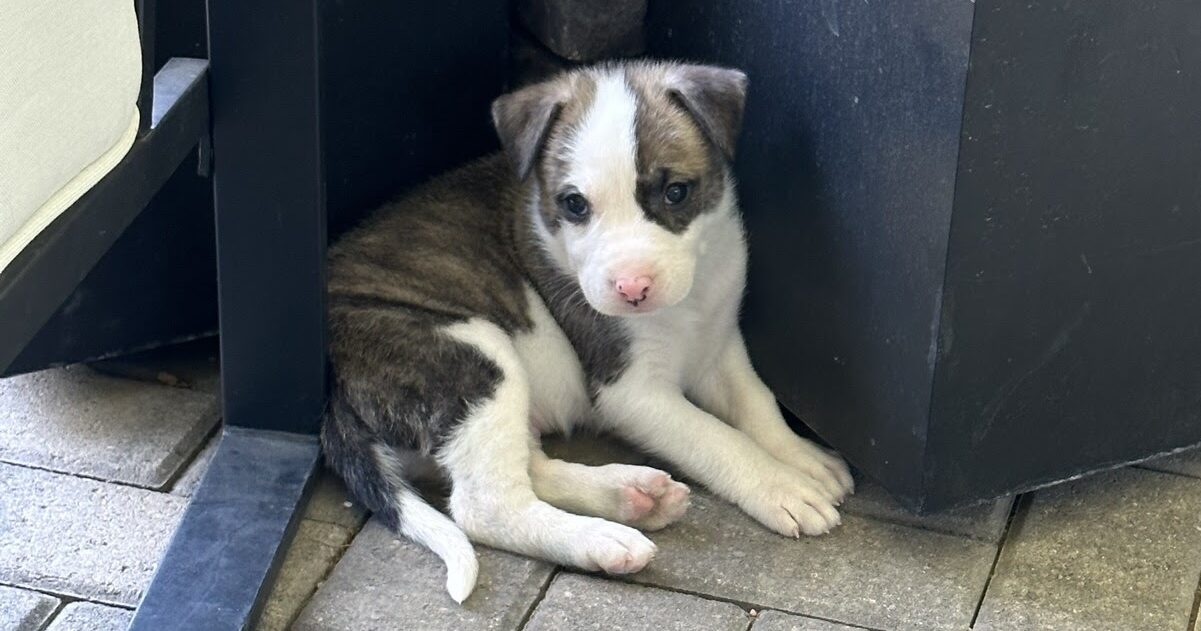
The Second Fear Period
Somewhere between six and 14 months of age, puppies go through their second fear period. Current evidence suggests that smaller breeds go through the second fear period earlier than larger breeds.
Once the fear period kicks in, it typically lasts for two to three weeks. The key to working through a fear period is to allow your pup to learn, explore, and engage at its own pace and to keep experiences and encounters positive. If your pup shows enough signs of fearfulness, dial down the intensity of an activity or experience or remove the fear-causing stimuli if possible.
Puppies at this age are often treat-motivated, so offering of high value treats helps to build positive associations with an object, place, or person that has made the pup fearful.2
During a fear period, puppies can become fearful of things they were previously unafraid of. Always let the puppy in front of you lead the way: if they are shutting down, minimize any potentially fear-inducing experiences and objects (like going to the vet, trimming nails, baths, etc.) that could become lifelong fears. If they show little to no fear, you may find you have to make nearly no adjustments at all.
Through the various puppy fosters I have had in my care, often before the fear period may start and until eight to 10 weeks of age, I have rarely seen the fear period emerge in a really significant way if a puppy has had an adequate foundation of socialization before entering the fear period.
It’s critical we remain aware of the signs of fear at all times, how to handle fearfulness, and be willing to make adjustments to ensure we do not create permanent fear of an object, person, or experience.
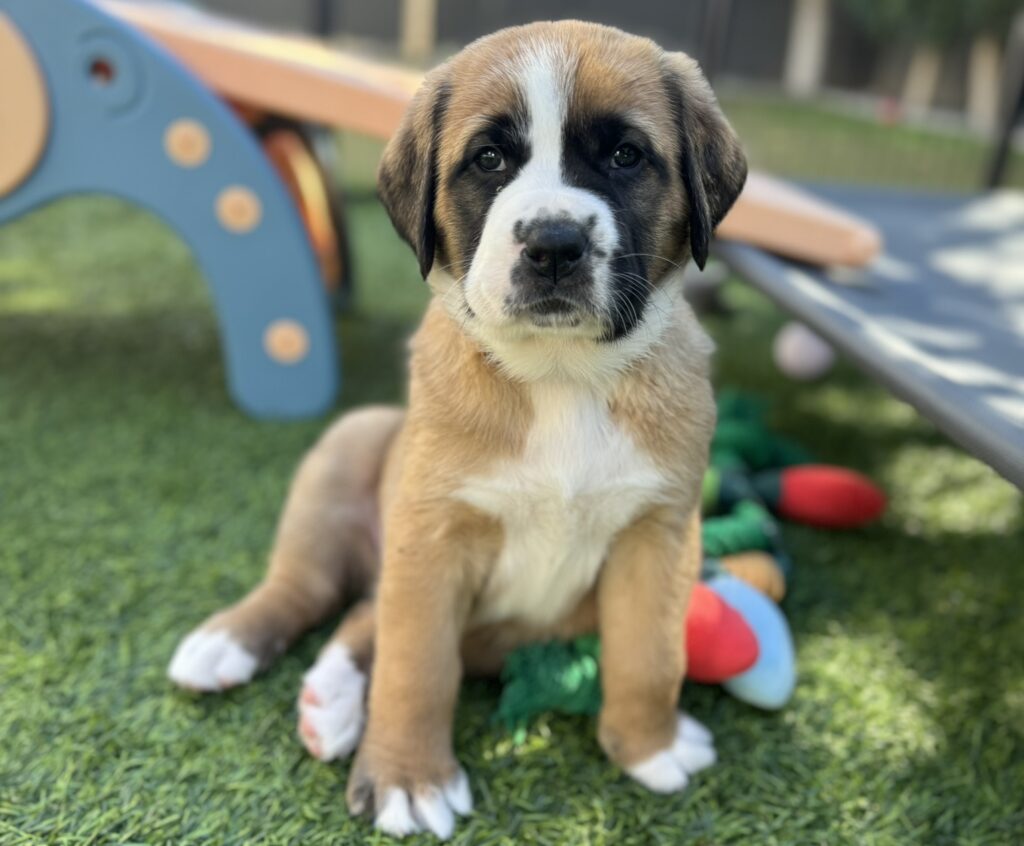
How to Handle Fear During Fear Periods
The best way to handle the fear periods is to try to prevent overwhelming your pup, which means always giving your pup the ability to interact at their own pace and a safe place to retreat to when it becomes to much.
Keep in mind that some pups may show simple concern or hesitation with a stimulus while others may show multiple signs of fear. The more apparent their fear is, the more careful and intentional you should be during the fear period(s).
If your puppy has started to show fear of something, you do not want to force them to keep interacting it; repeated exposure is not going to erase or cure their fear and is more likely to have the opposite effect of instilling a life-long fear.
Instead, you want to allow them to naturally explore and interact based on their comfort level. Think of the approach as making the fearful object or experience seem as if it is “no big deal.”
You can reward your pup with praise or treat whenever they approach or interact with the fearful stimulus. For certain types of stimuli, say loud noises (like vacuums, washing machines, dishwashers, etc.) or experiences they don’t need to engage in (lawn mowing), you can offer distractions to put the fearful stimulus in the background. This can be done by engaging the pup with a toy, food-based enrichment, or having a training session with commands they know already.
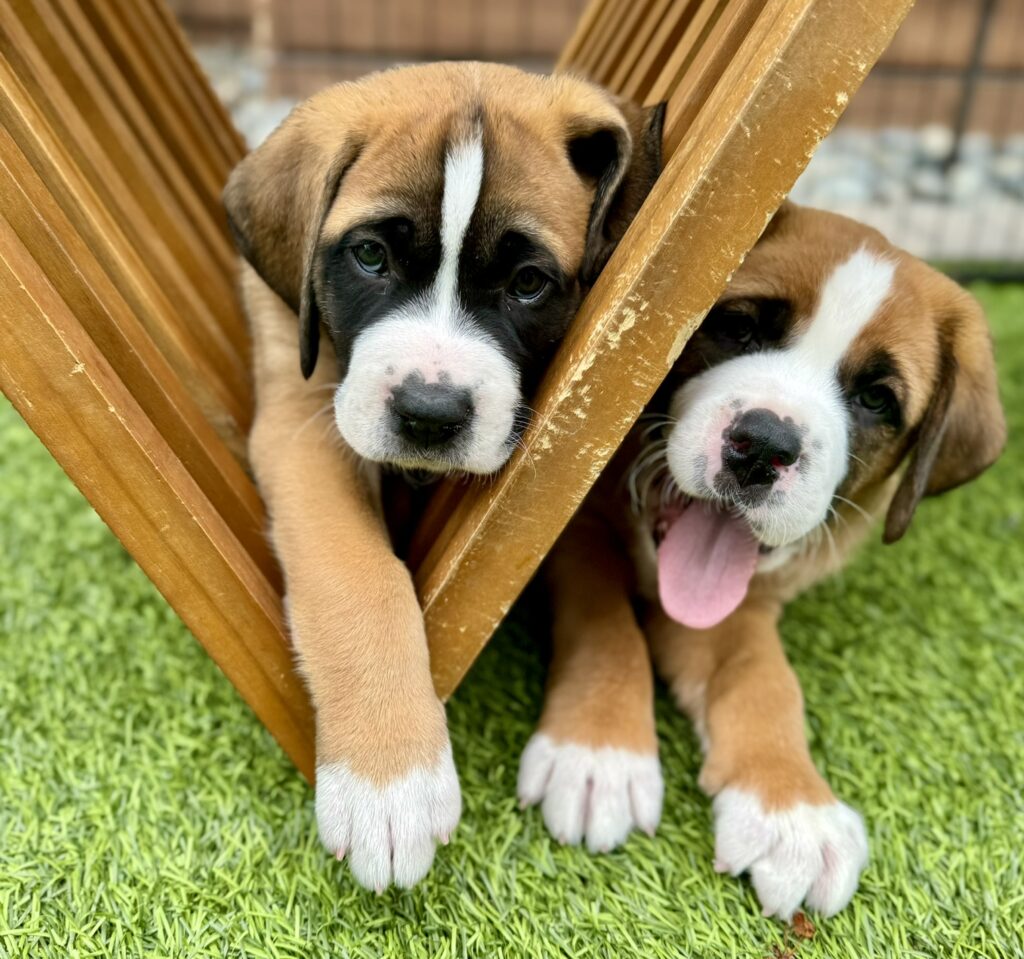
Examples
Your pup is scared of the sound of the washing machine.
The Approach: Place your pup in a safe space further away from the washing machine so that it can still hear the sound but at a much lower intensity than if it was right next to the machine. Give them high value treats or food-based enrichment, like a filled Kong so build a positive association with the washing machine being on.
Your pup is scared of uneven surfaces.
The Approach: Try to find a similar surface that is portable, e.g. a floor tile, piece of vinyl, tarp, or piece of carpet, and leave it in the pup’s environment so that you can encourage safe, controlled exploration of it.
The more fearful your dog is, the more you will need to get creative and think of something that is the least fearful version. Starting with a couch cushion or a a few blankets piled up that allows your pup to grip better and doesn’t create sounds might be a better introduction to uneven surfaces for the more fearful pup.
Then, whenever they show curiosity, like giving the stimulus they’re fearful or uncertain about a glance or sniff, reward with praise or a treat. If they step on it, heap on the praise or provide a very high-value treat!
Footnotes
- Morrow, M., Ottobre, J., Ottobre, A., Neville, P., St-Pierre, N., Dreschel, N., Pate, J., Breed-Dependent Differences in the Onset of Fear-Related Avoidance Behavior in Puppies, Journal of Veterinary Behavior (2015), doi: 10.1016/j.jveb.2015.03.002. ↩︎
- Serpell J., Duffy D.L., Jagoe J.A. Becoming a dog: Early experience and the development of behavior. In: Serpell J., editor. The Domestic Dog: Its Evolution, Behavior and Interactions with People. 2nd ed. Cambridge University Press; Cambridge, UK: 2016. pp. 94–102. ↩︎



